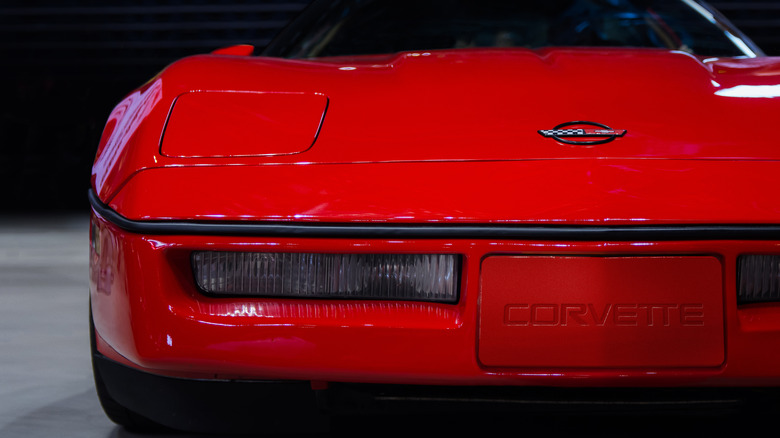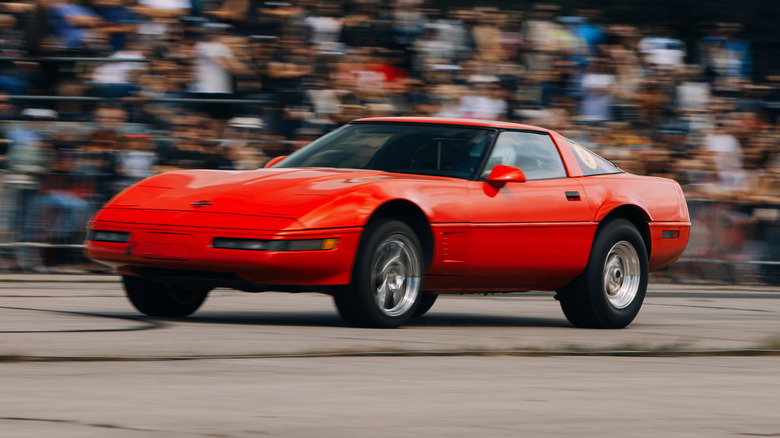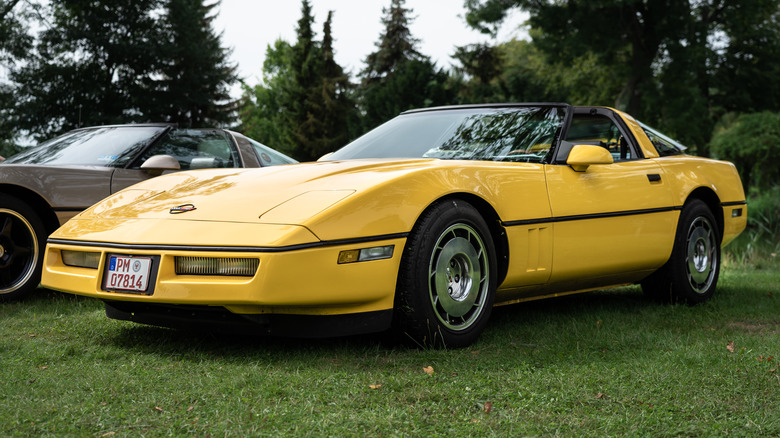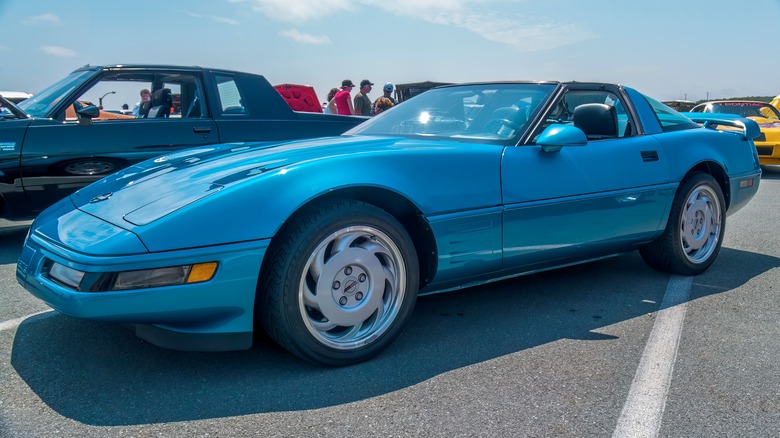The True Story Of How The Corvette Was Banned For Being Too Fast
Every sport has a touch of the absurd. Until 2015, if a college basketball player dared to dunk the ball during pregame warm-ups, the opposing team would start one point ahead. In baseball, if a player catches a fly ball in their hat, not only is the batter not out, they're eligible to advance three bases. Mixed martial arts famously forbids the 12-6 elbow, disallowing a blow that's perfectly vertical, but letting it ride if it's canted even one degree in any direction.
By comparison, banning a racecar for going too fast and winning too much... well, that's still pretty wild. Such was the fate of the C4 Corvette. In the high and far-off days of the mid-'80s, the C4 Corvette had an unprecedented run of wins in stock-car racing. What followed was a drama of rules, international expectations, and racetrack politics that led to the C4's removal from competition.
Revolution and revelation
What made the C4 Corvette so special? In short, everything. On its debut in 1984, the impact of the new model on Corvette aficionados and lovers of American muscle was somewhere between a breath of fresh air and a religious experience. The C3 Corvette it replaced was a museum piece; its design went largely unchanged after its introduction in 1968. The C3 was beautiful, but it was the best part of 20 years out of date.
The C4 Corvette would be something altogether new. Wild ideas came up in the design phase — a mid-engined, light-bodied 'Vette inspired by a Lotus? — and even the comparatively sane final result defied expectations and shattered records. Fiberglass and aluminum lightened the American classic's old bones, while a massive 5.7-liter fuel-injected V8 engine kept things suitably muscular up front.
The result sounds less than impressive now — zero to 60 miles per hour in seven seconds and a top speed north of 140 miles per hour — but at the time, that made the 'Vette a solid contender for the quickest production car in the world. The acceleration picked its teeth with Jags and Porsches twice the Vette's price, and Car and Driver's breathless 1984 review even praised the car's cornering and responsiveness, both areas where the older Corvettes had struggled.
The C4 Corvette was calm like a bomb
Upon its debut in 1984, the C4 Corvette hit racetracks and streets like a block of its namesake explosive. Its wheelhouse was SCCA Showroom Stock GT racing, where the C4 dominated every race it entered. Hagerty quotes racing school owner John Powell: "The Corvette beat Porsche 29–0 from 1985 to 1987."
Then, for lack of a more charitable way to put it, Porsche and other carmakers threatened to take their ball and go home. Most were well-established worldwide racing marques in Europe. They didn't need American stock-car racing for their business model, least of all with an American thoroughbred blowing them off the podium at every race.In fairness to Porsche and the rest, the threatened withdrawal may have been bad sportsmanship, but it was smart business.
As Hagerty notes, crowd size was down and advertisers were less interested in races, all because one model was virtually guaranteed to win. In response to those pressures, SCCA removed the C4 Corvette from competition after the 1987 series. All was not lost for fans of the 'Vette, however. The team behind the C4 founded the Corvette Challenge, a race that was entirely C4s. SCCA signed on, sponsors bought in, and two seasons of Vette-only competition ensued. The Corvette Challenge even ran on ESPN, supporting big-ticket Trans-Am and CART races.
Junkyard immortality
These days, fans of the C4 Corvette have plenty of opportunities to demonstrate their affection. The Corvette Challenge may be old news and stock cars on ESPN haven't actually been stock for a long time, but the C4 enjoys the immortality of a popular classic: there are still plenty around. Auctions, barn finds, and junk sales routinely turn up old 'Vettes that just need some love and elbow grease to showcase '80s-vintage supremacy.
The mightiest of the lot is the fearsome ZR1, the highest trim level available for the C4 'Vette. The upgrade nearly doubled the horsepower of the stock design, raising its performance markers from "phenomenal for the '80s" to "frankly pretty impressive in 2023" — zero to 60 miles per hour in just 4.5 seconds and a top speed edging past 180 miles per hour. Those stats no doubt registered with SlashGear fans, who voted the C4 ZR1 the second-coolest Corvette ever made.



